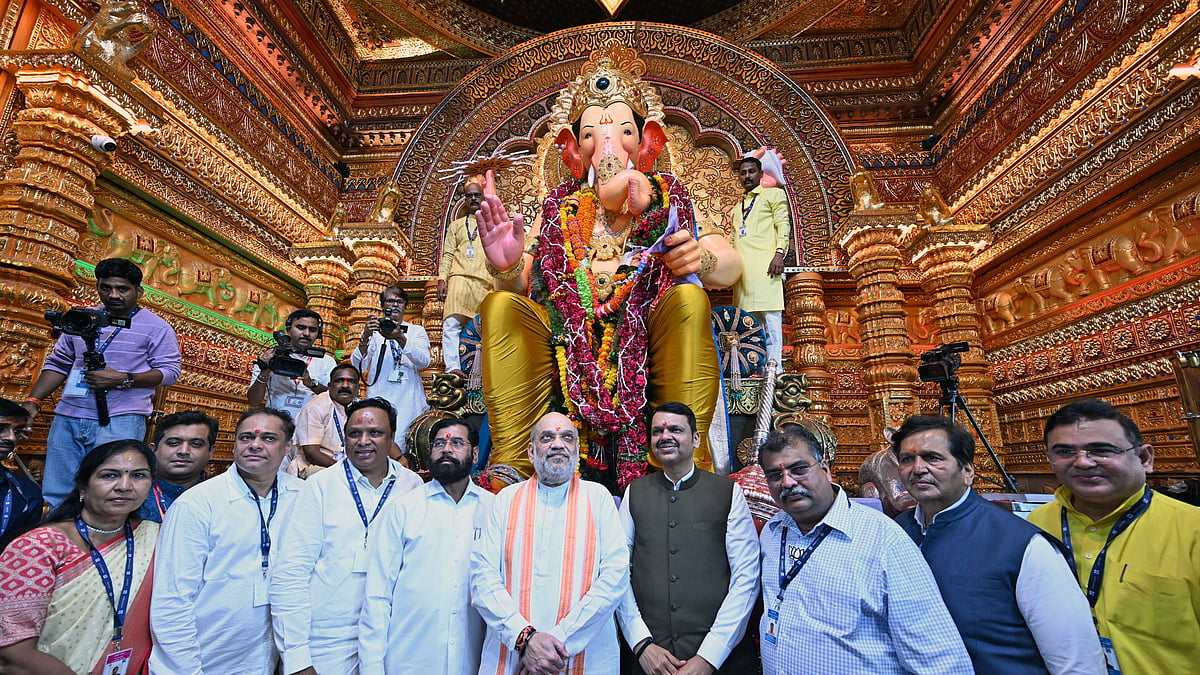The harvest festival, celebrated as Hindu New Year, is acknowledged by many names across the country. As Ugadi in Karnataka, Telangana and Andhra Pradesh. Celebrated in various regions with enthusiasm and fervour, Gudi Padwa or Samvatsar Padvo, observed in Maharashtra and Goa, is the harbinger of spring and New Year for Maharashtrians and Konkani Hindus. It is observed as Chaitra Navratri in some parts of the North.
Gudi Padwa gets its name from two words — ‘gudi’, which means a flag or emblem of Lord Brahma and ‘padwa’ means the first day of the phase of the moon. “Like any Hindu festival, people wake up early, bathe and draw rangoli outside their main door and put up a gudi — a fresh piece of cloth which represents a flag, symbolises wealth and happiness,” enthuses Pune-based Vaishali Sawant. Symbolically it also stands for Lord Rama’s victory return to Ayodhya after slaying Ravana.
Sindhis celebrate it as Cheti Chand. The legend goes that Varun Dev, the God of Water, appeared as Jhulelal to save their community from a ruler who wished to do away with Sindhi culture and Hinduism. It is practised as a day of gratitude and prayer to Varun Dev. Tahiri or Taayri, a sweet rice preparation with fennel, copra, black raisins, is offered as prasad on this auspicious occasion. People greet one another with the phrase “Cheti Chand jyon lakh lakh wadayun athav.” Festive preparations include malpua, falooda, pakhwan and more.

Significance of neem and jaggery served as prasad
The menu in Maharashtrian households, on this day, is generally fixed from generations to generations. Puran poli, amti, shrikhand puri, aloo sabji, chitranna, papad, bhaje, koshimbir/raita are some of the delicious preparations. However, the main dish to be consumed on Gudi Padwa is Neem Pachadi, Bevu Bella or Ugadi Pachadi. It denotes all the six tastes — sweet, salty, spicy, sour, astringent and bitter. The six ingredients incorporated in the preparation of Ugadi or Neem Pachadi are representations of these six tastes. There are six emotions of life which all of us experience — happiness, sorrow, anger, fear, disgust and surprise. And these six tastes relate to one emotion each. The implication of this mixture is the philosophy of life itself, which is a mishmash of bitter and sweet, neem is bitter while jaggery is sweet. So ingesting this pachadi is a reminder that one has to face life’s good and bad phases stoically.
“Pachadi is not just any drink but has a lot of flavours and health benefits too. Chaitra maas is the beginning of summer and this drink is supposed to help you deal with the heat and its other side effects,” says Culinary Expert and Food Columnist Neelima Nitin. It helps in detoxification, deworming, prevent ulcers and boost immunity, informs Dietician Anamika Singh.
Nourishing Bobbattu and Chitranna from the south
Bobbattu or Obbattu also known as Puran Poli, the signature dish of Maharashtra, is an essential item on Ugadi/Gudi Padwa menu in some households. Made of sweetened stuffing of chana or tur dal, in wheat and refined flour casing, is a great source of proteins, fibre, folate and helps reduce cholesterol.
Chitranna is a fragrant turmeric-infused rice dish from the south, tempered with curry leaves, mustard seeds, peanuts, ginger and lentils. A choice of souring agents from lemon, tamarind, raw mango to lime and gooseberry (amla) are engaged to render its tanginess. Ginger tackles cold, cough and sore throat along with aiding digestion while lemon contains Vitamin C to combats free radicals. Plain rice can be substituted with brown rice to increase its fibre quotient. Both are ideal to fight impending summer ailments.
Some households have amrakhand as the sweet dish which announces the start of the mango season and has probiotic qualities.
Sai bhaji and bhuga chawal

Besides other preparations, sai bhaji is a vital dish on the Sindhi plate. Sai means green and with chana dal and spinach as its mainstay, all the goodness comes from spinach, fenugreek leaves, dill, ambat chauka (khatta palak) and the tangy tomato. Whole spices and caramelised onion do the wellness trick in Bhuga chawal. Packed with proteins and vitamins, they help fight the health conditions due to the onset of change in weather. Dessert sevaiyan kheer of vermicelli made from wheat, provides carbohydrates to give your body the energy it requires. Cashew nuts and raisins contain various vitamins and minerals, calcium, and iron that help boost immunity.
Neem Pachadi
Ingredients: 1tbsp of tamarind pulp, 3-4 tbsp jaggery, 2-3 tablespoons of raw mango pieces, 1-2 tablespoons of cleaned and washed neem flowers l Asafoetida powder a pinch, Salt a pinch, 1/2 tsp of black pepper powder.
Method: Mix the tamarind pulp in 1 cup of chilled water. To this add jaggery and mix till it gets dissolved. Add neem flowers, chopped raw mango, asafoetida, salt, black pepper powder and muddle. It’s ready to serve. Though it’s a drink, just a few spoons are consumed like “Tirtha”
–Recipe by Culinary Expert Neelima Nitin











